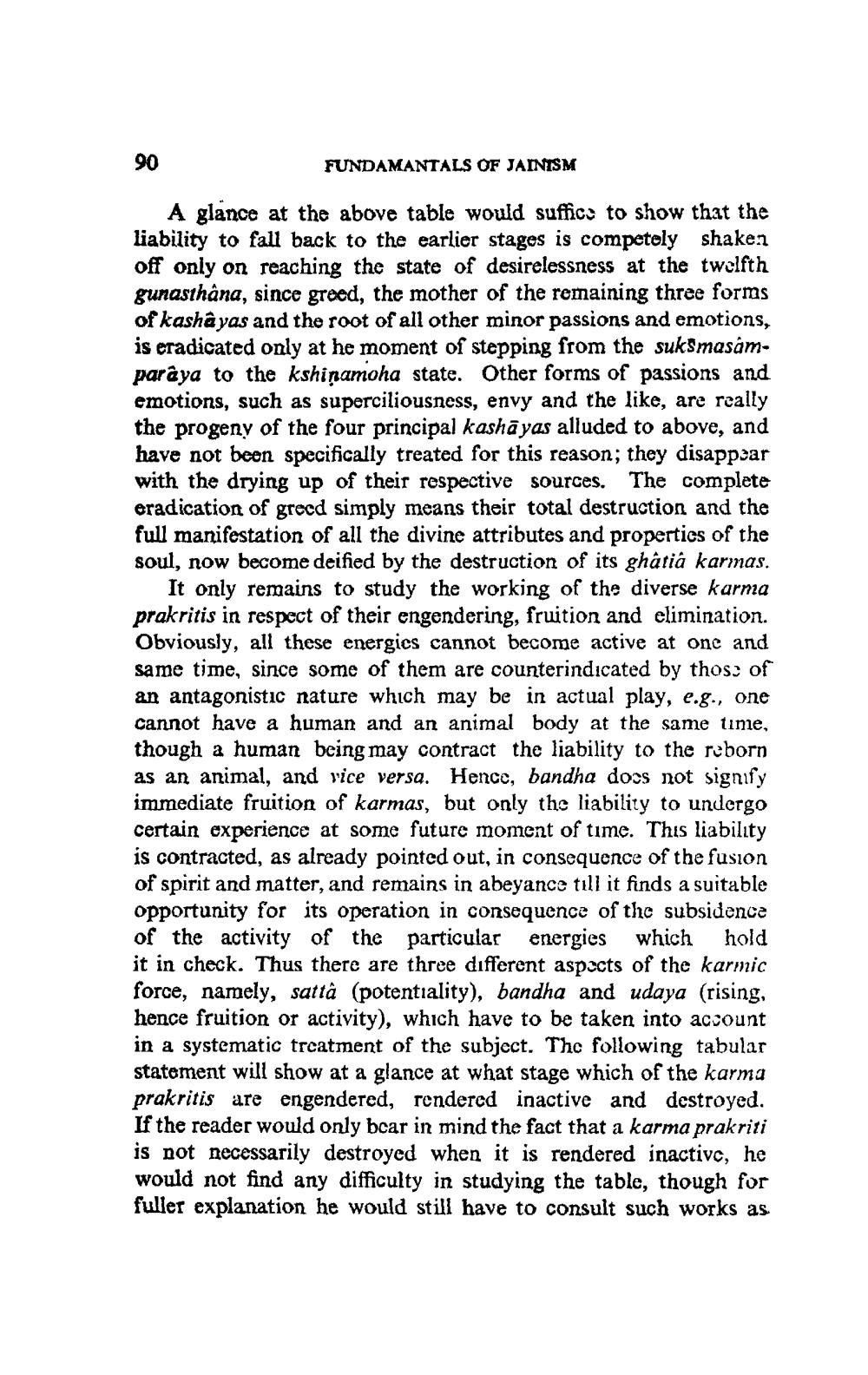________________
90
FUNDAMANTALS OF JAINISM
A glance at the above table would suffics to show that the liability to fall back to the earlier stages is competely shaken off only on reaching the state of desirelessness at the twelfth gunasthâna, since greed, the mother of the remaining three forms of kashayas and the root of all other minor passions and emotions, is eradicated only at he moment of stepping from the suksmasam. paraya to the kshinamoha state. Other forms of passions and emotions, such as superciliousness, envy and the like, are really the progeny of the four principal kashāyas alluded to above, and have not been specifically treated for this reason; they disappear with the drying up of their respective sources. The complete eradication of greed simply means their total destruction and the full manifestation of all the divine attributes and properties of the soul, now become deified by the destruction of its ghatia karmas.
It only remains to study the working of the diverse karma prakritis in respect of their engendering, fruition and elimination. Obviously, all these energics cannot become active at one and same time, since some of them are counterindicated by those of an antagonistic nature which may be in actual play, e.g., one cannot have a human and an animal body at the same time, though a human being may contract the liability to the reborn as an animal, and vice versa. Hence, bandha dogs not signify immediate fruition of karmas, but only the liability to undergo certain experience at some future moment of time. This liability is contracted, as already pointed out, in consequence of the fusion of spirit and matter, and remains in abeyance till it finds a suitable opportunity for its operation in consequence of the subsidence of the activity of the particular energies which hold it in check. Thus there are three different aspects of the karmic force, namely, sattâ (potentiality), bandha and udaya (rising hence fruition or activity), which have to be taken into account in a systematic treatment of the subject. The following tabular statement will show at a glance at what stage which of the karma prakritis are engendered, rendered inactive and destroyed. If the reader would only bcar in mind the fact that a karma prakriti is not necessarily destroyed when it is rendered inactive, he would not find any difficulty in studying the table, though for fuller explanation he would still have to consult such works as




